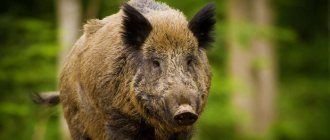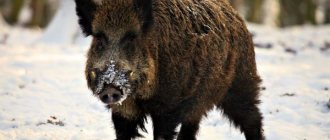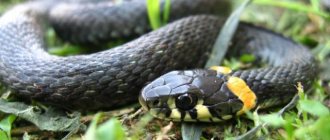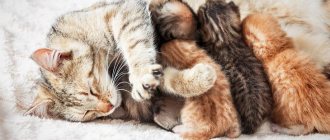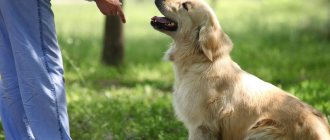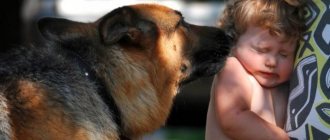Encounters between wild boar and humans are becoming more frequent due to the high population of pigs and the decrease in the number of predators that hunt them. It may seem to some that the boar is a peace-loving and funny creature, but it has nothing from Pumbaa from The Lion King. The wild boar, although it is a relative of the domestic pig, is a wild animal and can be very harmful. The behavior of a 100 kilogram animal is unpredictable. Just like what he will eat today: raspberries, viburnum, truffles, lizards or you - boars are omnivores.
In search of food, they often raid vegetable gardens and garbage cans. Although they are not looking for a meeting with a person, they prefer to immediately run away. But there are situations when they have to attack.
In 2022, in the quiet town of Haid, located in northern Germany, wild boars staged two attacks at once: one broke into an optician's shop and began destroying everything, and the other attacked a bank. Several residents were injured, the rest fled to their homes and did not soon go out into the street. The police called a hunter, who had to kill one of the boars. The other one disappeared.
Boar lifestyle
The wild boar is an omnivore; it eats vegetation, roots, young shoots, spruce branches, insects and their larvae, nuts, berries, cones, bird eggs, frogs, snakes, small animals, rodents, and carrion. But this predator is unlikely to see food in the form of a hunter. And for a wild boar to attack a person, it needs to be provoked.
These animals can be found near forests, in river valleys, near reservoirs, in places enriched with food: nuts, acorns, berries, in areas with high-quality soil, where there are many insects, with reeds and bushes, and near swamps. In the warm season, wild boars prefer mixed forests, the presence of cedar cones, and ponds; in winter, they prefer forest edges, fields, and meadows. Its roosting places are areas hidden by thickets, under spruce trees, with depressions in the ground.
They usually feed in the evening and at night, raid fields and vegetable gardens, and also swim. But meeting them during the day is no exception: more often at this time, boars settle down with others to rest in pits and impassable places. As a rule, the sounds of feeding animals carry far. Old males stay apart and come to the herd to mate.
Habitat
Interested to know where the wild boar lives? The most favorite habitat is wetlands and wooded areas. Representatives of the genus live in Europe, Asia, India, Africa, and the Middle East. England, Sweden, North America. Animals live in the middle zone, in the Moscow region, Krasnoyarsk region, Irkutsk region, and Siberia. Animals climb into high-mountain meadows, although not very high; they are not found in the mountains and steppes. They live on average 10-12 years. Many people wonder whether the wild boar poses a threat to people.
Features of behavior
Ungulates are distinguished by conservative behavior, get used to the same paths, visit their favorite places for feeding, and use a single bedding area.
If animals happen to catch the eye of people while stealing crops from gardens, the wild boars reaction is to flee. They pose a danger only to tourists and hunters. These animals sense the smell at a distance of about 5-7 km.
Due to changes in the food supply, wild boars leave their homes and go in search of new ones. Animals make transitions in the most inconspicuous places, trying not to move out into the open space, but to make their way around it. If they have to show themselves, wild boars look closely for a long time, and then overcome this section of the path in one jump.
Notable Tragic Cases
If you still doubt whether a pig can eat a person, then read the real story that happened in Russia. In winter 2008, a tragedy occurred in the village of Mikhalkovo, located in close proximity to Tula. A lonely old man kept a large number of ducks, dogs, and cats on his farm. The house was old, dilapidated and neglected. It was in this building that 70-year-old Valentin Belousov lived with 5 pigs. One day, neighbors discovered that the pensioner had not been seen for several days. Panic was raised by the postman, who, looking through the window of the house, saw a gnawed skull lying on the floor.
Neighbors called the police, but even law enforcement officers were afraid to enter the house of the angry animals. From hunger, the pigs rushed at the doors and hit their faces. First they were given food, and only then were people able to enter the room, which looked more like a barn than human habitation. On the floor they found the remains of clothes, hair and the skull of the poor owner.
Since the man was not listed as a drunkard, they thought that he had suffered a heart attack. Hungry animals could easily have eaten the already dead body. Therefore, they did not execute them, as in medieval France, but handed the animals over to the relatives of the tragically deceased Belousov.
The Italian mafia used pigsties to hide corpses. There are known cases when in this way they got rid of rivals from other mafia clans. According to Simon Pepe, you can understand how long it takes for a pig to eat a person. He said that Francesco Raccosta, beaten with metal bars, was thrown into a herd of pigs, and in 8 minutes, 16 animals ate the 90-kilogram man.
How dangerous is a wild boar?
A wild boar attack on a person can occur for the purpose of self-defense, or also due to the presence of cubs nearby. You should not approach a grazing herd or pick up a piglet: the pig will immediately react to this. If an angry male, having missed a blow, can rush on, then the female will repeat the attack against the offender until she eliminates him. Sick or injured animals are also dangerous due to the aggression caused by this condition.
Despite its relatively small size, the boar is dangerous due to its strength, the presence of powerful jaws, fangs and sharp incisors, and its high speed of movement, so an encounter with it can have consequences in the form of bruises and serious injuries. Wounds from fangs can be quite deep, and on top of that, there is a danger of infection through them. Why is a boar bite dangerous? Serious diseases can be transmitted from a sick animal.
The danger also lies in disturbing the wild boar's territory and disturbing its afternoon nap. But foresters can pass by an animal, engrossed in its occupation, and not cause any disturbance to it.
Who is this pig?
First, let's look at what this pet is. The pig has quite ancient origins. Scientists have determined that primitive pig-like creatures appeared on planet Earth 55 million years ago. Their variety is impressive. Ancient pigs ranged in size from a rabbit to 2 meters in height and 3 meters in length. The giants were called entelodonts.
There was also a variety with a horn on its forehead. They were slightly smaller than entelodonts, but much larger than modern specimens. Already at that time they were omnivores, had large incisors, canines, and low-crowned cheek molars. They fought off opponents with their fangs, dug huge holes in the ground, mined roots and dug up the roots of plants.
In addition to pigs, the classification of the suborder also includes peccaries and hippopotamuses. Although pigs have hooves and are classified as artiodactyls, they are not ruminants. Their stomach cannot digest only plant foods; they also need protein. Therefore, to the question of whether a pig can eat a person, the answer may well be in the affirmative.
The ancestors of domestic pigs are wild boars that live in nature and are considered scavengers. They devour found animal corpses. Therefore, it can be said that a hungry pig, which the owner has not fed for a long time, is capable of going in search of any food on its own. Do pigs eat people? We'll deal with this further.
Signs of the presence of a wild boar
If along the way you can see dug-up areas of earth, hoof marks, fur on bushes and trees, fang marks on the bark, deep muddy puddles - this means that wild animals are roaming nearby.
In order not to accidentally alarm the wild boar, it is recommended to make noise while walking through the forest: talking, singing, knocking. As a rule, upon noticing a person, these animals leave on their own.
The risk of encountering a boar is highest at dusk and before dawn. Most often, wild boars attack people in winter.
Characteristic
Since pigs descended from wild boars, they inherited the qualities of this formidable animal, which it is better not to meet while walking in the forest. This is a fairly smart and quick-witted creature. Scientists often conducted experiments to study the behavior of pigs. It turned out that in some cases she showed ingenuity and excellent memory better than a dog. She was included in the top ten smartest animals in the world.
I. I. Akimushkin observed how the pig quickly navigated the new situation. She knew perfectly well how to open the cabinet doors, behind which there was a bowl of food. However, even he called the pig precocious and “criminal.” He probably knew whether a pig could eat a person.
Academician I.P. Pavlov noted as a result of research that the pig is a very nervous animal. It loves constancy and, if something unusual happens, it gets terribly worried and nervous.
Characterizing this animal, I would like to note that it swims beautifully, is not afraid of water, can travel up to 30 km a day for prey, and has an extraordinary sense of smell. Pigs bathe in mud solely to rid their skin of parasites, ticks and other insects. The thick crust of dirt that forms on the body dries out and prevents pests and bloodsuckers from getting to the skin.
How to behave
If there is a danger of being chased by an animal, it is advisable to climb to a height of at least two meters from the ground - a stone, a car, a tree. Large cleavers, standing on their hind legs, reach relatively high.
If a wild boar rushes at speed with the aim of attacking a person, you need to sharply step aside just before the animal strikes. Often he rushes past and never returns.
If you find yourself in a hopeless situation, you need to try to shoot (a 7.62 mm rifle is recommended) or stab the animal in the face, between the shoulder blades, in the stomach, or in the lymph nodes with a knife.
It is advisable to try your best to stay on your feet in order to win. When wild boars attack people, their principle is to knock the person down and then finish them off with their front legs and tusks.
If a boar attacks a person, screams will enrage the animal even more, attempts to pierce its skin with a knife will be absolutely useless, and shots from small-caliber weapons will only aggravate the situation. The animal has growths of resin on its body, formed by friction with trees, which protects it from bullets. Stones won't help either. The boar's flight is annoying and it is very fast.
Thus, acceptable options include using a large-caliber gun or rescuing in a tree. When climbing a hill, you should not shout or throw anything at the wild boar. You need to wait until he calms down, loses interest and leaves.
Sovronya trial
In the Middle Ages, there were many stray pigs that walked around villages and even cities. Hungry animals have always looked for food near humans. In addition to waste, pigs did not hesitate to enter open houses in search of food. There were cases when a baby lay in a cradle on the path of a hungry sow. So, if you are asked whether pigs eat people, you can calmly answer that an adult is capable of eating babies.
Law enforcement officers seized such animals and tried them, like people who had committed a crime. Historians explain this behavior of medieval residents in different ways. Some people think that they used to believe that all beings are equal before God, so they also need to be punished for criminal behavior. Other researchers suggested that with such open vessels, people encouraged animal owners to keep an eye on them more vigilantly, and parents not to leave their babies unattended.
During the trial of the pigs, all necessary procedures were followed: witnesses were interrogated, torture was used, the animal was sentenced and executed by the executioner. Cases of not only eating babies, but also attacks on older children were investigated. For example, a child in 1386 had his leg and face torn apart by an animal.
Collision Examples
Attacks of wild boars on people are unintentional when hunters unexpectedly lift them from their beds. Usually the boar makes several jumps in one direction and then begins to maneuver. If the hunter finds himself opposite the movement of the cleaver, he will expose himself to the blow.
They easily jump over a meter-high fence, quickly dig tunnels, escaping danger at a speed of 50 km/h. If a boar attacks a person and mortally wounds him, his next action is to try to eat the victim.
Running away from the hunter, the animal removes any obstacles in its path, regardless of whether the object appears before its gaze, animate or not. Damage received from wild boars in this way has nothing to do with an attack.
Boars tolerate wounds well, as has been proven in practice. During one of the raids, the cleaver made six jumps after being shot in the heart. As it turned out, the bullet cut off the upper part of the organ as the boar continued moving.
There are common cases when a shot animal gets up and continues to run, trying to hide from the hunter. First he runs at a gallop, and then at a trot and walks. Depending on the severity of the injury, its path can be long or short. At the end of the move, the boar makes loops and stops not far from the place it has passed.
Pig execution
Now you know whether pigs can eat a living person. French historical documents contain records of trials and executions of these animals. Thus, a pig that attacked a child and tore his face and leg was sentenced to the same torture. They put on her a dress like the girl who was mutilated by the pig, they inflicted similar wounds on her, and the executioner publicly strangled her with a thick rope.
The piglet that attacked the baby was hanged in the city square. Records of money spent on the execution of pigs were kept in the same way as humans. Thus, in 1457 the following report was written:
- 6 sous were spent on keeping the animal in prison.
- They paid 6 sous for the cart on which the pig was taken to the scaffold.
- The payment for the work of the executioner, who was specially called from Paris, amounted to 54 sous.
- They tied the pig with a rope, the cost of which was 2 sous.
- Total spent 68 sous.
For the fact that a pig ate a man, it was sentenced to death. But there were also cases of acquittal, which shows the seriousness of the judicial system of France in the Middle Ages. In 1457, piglets whose mother was executed for murdering a man were acquitted. The documents say that during the investigation it became reliably known that the participation of piglets in the crime was not established.
Now you know whether it is true that pigs can eat humans. But the reasons for this behavior of animals are not clear. Why do pigs eat people? What circumstances provoke them to do this? Let's further understand what motivates the sow hare in such cases, whether it can attack an adult for the purpose of eating, whether such attacks occur in modern society.
Can a pig kill on purpose?
The answer to this question is clear. Yes maybe. According to statistics, an average of 22 people die from pet attacks in America every year. Of all the cases, about 75% of the animals deliberately attacked their owners. But these are general data for all livestock, not just pigs.
Recently, in 2022, Marie Yates was attacked by a pig in Darlaston. The woman was sitting in bed reading a book when she heard a noise. Looking out into the yard, she saw a 30-pound pig that had destroyed the barn doors and trampled and eaten all the plants in the garden. The woman naively thought that she could drive her away with a broom. But the animal attacked her and tore her leg in several places. It was necessary to stitch up a wound 8 cm long and 2 cm deep. Neighbors came running to the cries for help, only thanks to the intervention of the police and many people the woman remained alive.
Knowing for sure that pigs are dangerous creatures, be careful when keeping them in an enclosure or a special pen. Take care of yourself and do not leave your children unattended!
What role do helminths play in the lives of animals?
Wild boars are susceptible to a number of diseases caused by helminths. One of the most common and dangerous is trichinosis.
Trichinosis is a disease caused by Trichinella. The location of the adult individual is the small intestine. After fertilization, the male dies, and the female increases in size and produces larvae over the course of several days.
The latter penetrate through the intestinal mucosa and enter the blood and lymph of wild boars. From there they spread throughout the body and settle in the striated muscles.
There they are twisted into a spiral and covered with a capsule. In this state, the larvae accompany their host throughout their life.
This disease affects about sixty species of wild boar. The scale of distribution is everywhere.
Animals with severe infestation experience the following symptoms: trembling throughout the body, itching, diarrhea. They retire. In general, wild boars can be carriers without symptoms.
The disease can only be determined after death using compressor trichinoscopy . The method is based on identifying capsules in muscle tissue. The material for research is the tongue, calf muscles, muscles of the diaphragm, abdomen, intercostal muscles.
